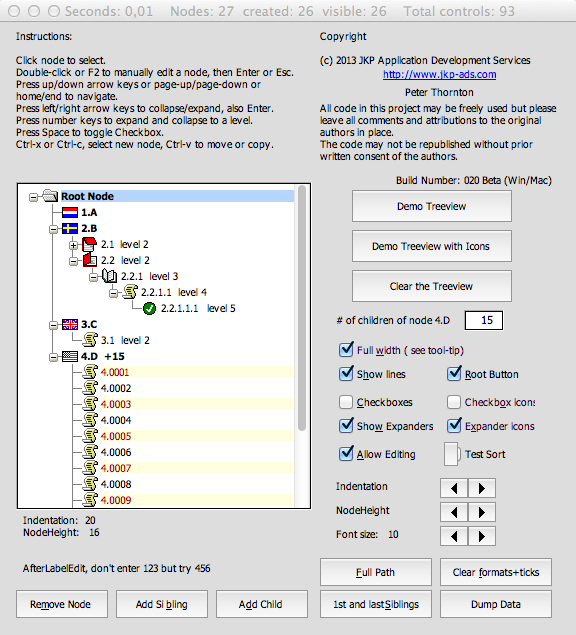
#MSACCESS TREEVIEW HOW TO#
How to put it to use in your own VBA project. In the following pages I'll show what our treeview can do and explain Two treeviews, left: VBA tree, right: Common controls tree One (right) side-by-side in their simplest display mode (read on, thereĪre even prettier screenshots further down the page): The screenshot below shows both our new Treeview (left) and the Windows A couple of weeksĪfter I started building this I tricked Peter Treeview "control", that only uses the native Office forms controls.
 The standard Treeview control, like all non built-in ActiveX controls,Ĭannot be used in 64 bit versions of Office.Įspecially the second point convinced me to develop a custom-made. Replacing both, but at worst the user's Excel can crash when trying Atīest it could entail removing both the control and the reference and People using 32 bit Windows will almost certainly have problems. If you distribute a file that was saved in 64 bit Windows,Ĭontaining one of the "Microsoft Windows Common Controls 6.0" (The TreeviewĬontrol is one of them) and with the reference set to "mscomctl.ocx", Compile errors due to a difference in how the control librariesĪre registered in 32 bits Windows' System32 and 64 bit Windows' SysWOW64įolders. There are a couple of problems with this Treeview control: Section, then you know what a versatile control this is to show hierarchically If you have ever used the Treeview control from the "Additional controls"
The standard Treeview control, like all non built-in ActiveX controls,Ĭannot be used in 64 bit versions of Office.Įspecially the second point convinced me to develop a custom-made. Replacing both, but at worst the user's Excel can crash when trying Atīest it could entail removing both the control and the reference and People using 32 bit Windows will almost certainly have problems. If you distribute a file that was saved in 64 bit Windows,Ĭontaining one of the "Microsoft Windows Common Controls 6.0" (The TreeviewĬontrol is one of them) and with the reference set to "mscomctl.ocx", Compile errors due to a difference in how the control librariesĪre registered in 32 bits Windows' System32 and 64 bit Windows' SysWOW64įolders. There are a couple of problems with this Treeview control: Section, then you know what a versatile control this is to show hierarchically If you have ever used the Treeview control from the "Additional controls" 

An MSForms (all VBA) treeview for Access, Excel And Word Content







 0 kommentar(er)
0 kommentar(er)
